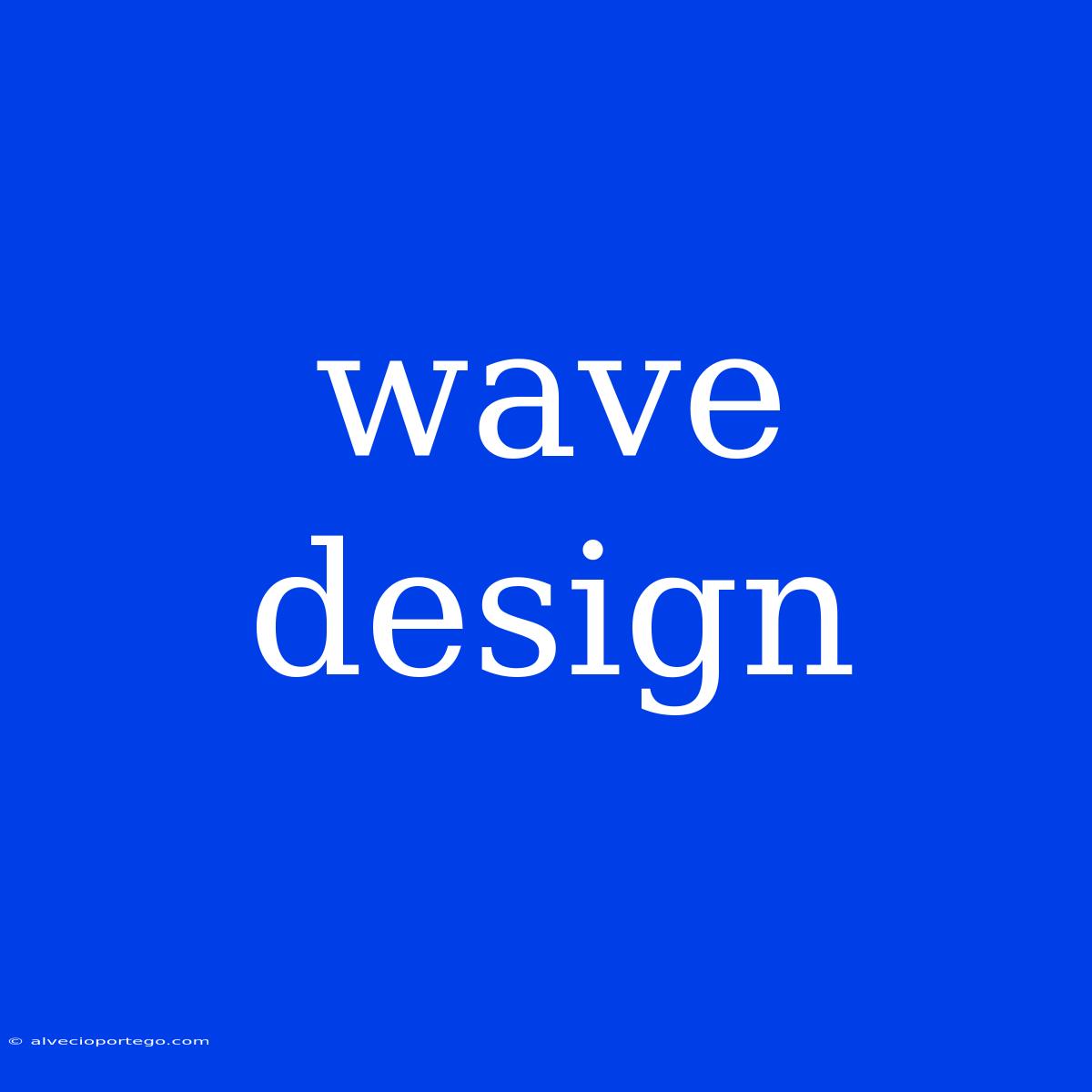Wave Design: A Guide to Capturing the Flow and Movement
Wave design is a popular and versatile design trend that's been around for years and shows no signs of slowing down. Its fluidity and dynamism bring a sense of energy and life to everything from logos to websites to clothing. But what makes wave design so effective? And how can you use it to enhance your own creative projects?
What is Wave Design?
Wave design is a design style that utilizes curved lines and smooth transitions to create a sense of motion and flow. It often draws inspiration from nature, particularly the natural ebb and flow of water waves, but can be adapted to represent various other concepts like energy, movement, or even sound.
Why is Wave Design So Popular?
The popularity of wave design stems from its ability to:
- Capture movement and dynamism: Waves evoke a sense of motion, drawing the viewer's eye across the design. This makes them effective for conveying energy, excitement, or even a sense of calm and tranquility.
- Create a sense of depth and dimension: The curves and contours of waves can add depth and dimension to designs, making them visually interesting and engaging.
- Offer flexibility and adaptability: Wave designs can be easily adapted to different shapes, sizes, and colors, making them suitable for a wide range of applications.
- Evoke positive emotions: Waves are often associated with positive emotions such as freedom, joy, and peace.
Wave Design in Practice
Here are some examples of how wave design is used in different areas:
1. Websites and Branding: Wave design is frequently used in website backgrounds, headers, and branding elements. It can create a visually appealing and modern aesthetic, conveying a sense of dynamism and forward momentum.
2. Logos: Wave logos are popular in industries that want to represent movement, fluidity, and energy. They often use simple curves and abstract shapes to create a recognizable and memorable image.
3. Graphic Design: Wave patterns can add visual interest to posters, flyers, brochures, and other graphic design projects. They can be used to create backgrounds, textures, or even as a key element in the overall design.
4. Architecture: Wave design can be incorporated into architecture to create fluid and dynamic spaces. For example, wavy walls, curved ceilings, and undulating facades can add visual interest and create a sense of flow.
5. Fashion: Wave patterns are seen in clothing designs, from simple prints to complex embroidery. The fluid shapes can add a contemporary and stylish touch to any garment.
Tips for Using Wave Design
Here are some tips for incorporating wave design into your work:
- Choose the right colors: Colors play a significant role in conveying the desired emotion. Warm colors like orange and yellow can create a sense of energy, while cool colors like blue and green evoke calm.
- Play with textures: Experiment with different textures and gradients to create more depth and visual interest.
- Think about scale and proportion: Waves can be used to create both subtle and bold effects. Consider the overall design and the impact you want to create.
- Experiment with different styles: Wave design can be minimalist or elaborate. Experiment with different styles to find the one that best fits your project.
- Balance complexity with readability: Avoid overwhelming the viewer with too many complex curves. Keep things simple and ensure your design remains clear and easily understood.
Conclusion
Wave design is a versatile and effective design trend that can be used to add movement, depth, and visual interest to any project. By understanding its principles and applying the tips mentioned above, you can effectively incorporate wave design into your own work.

